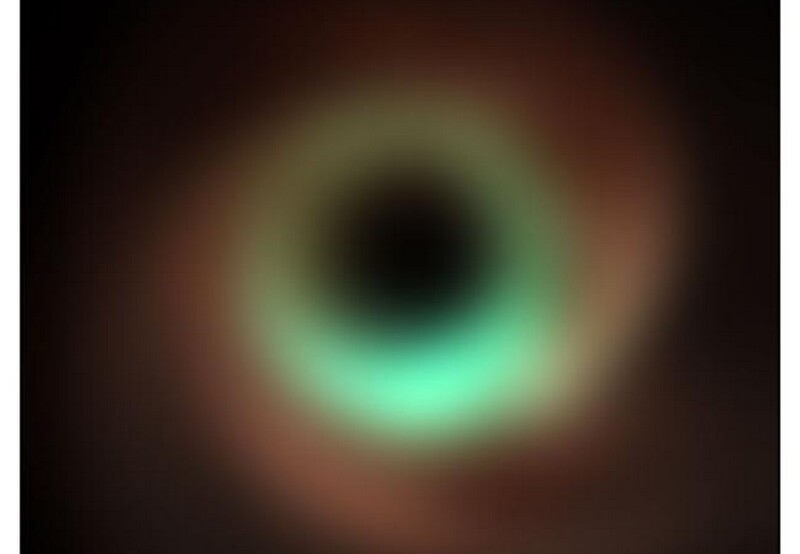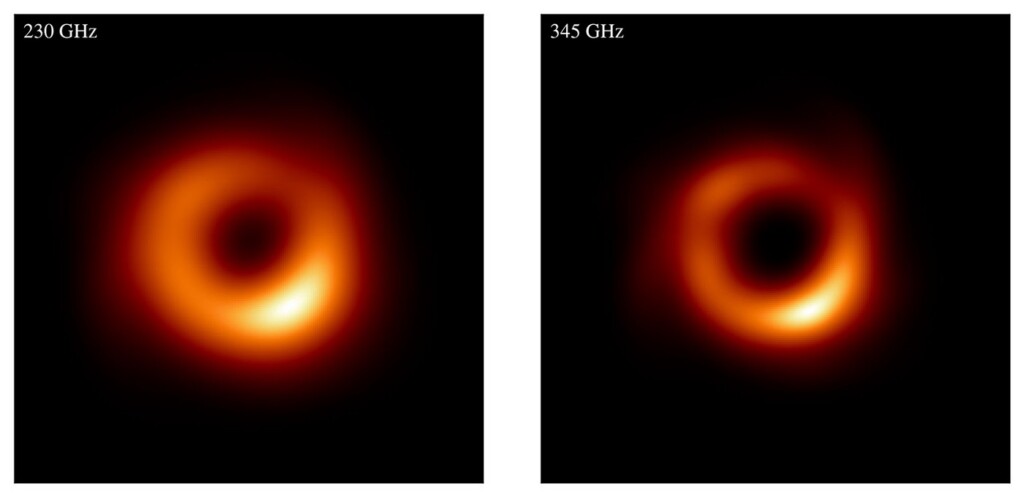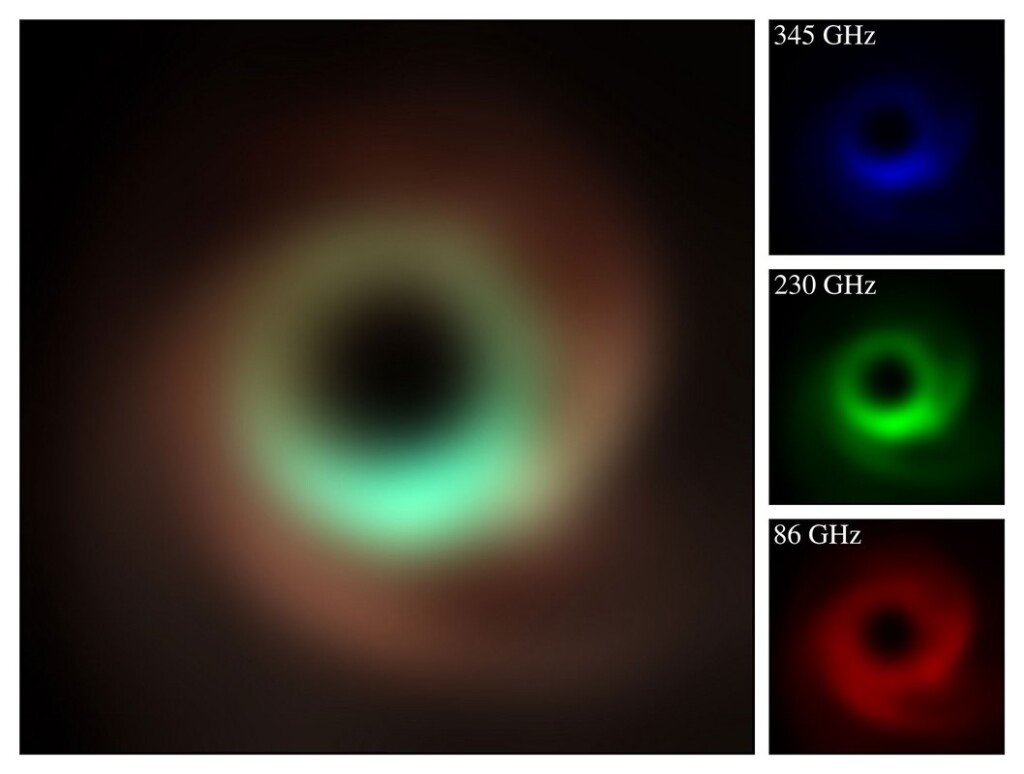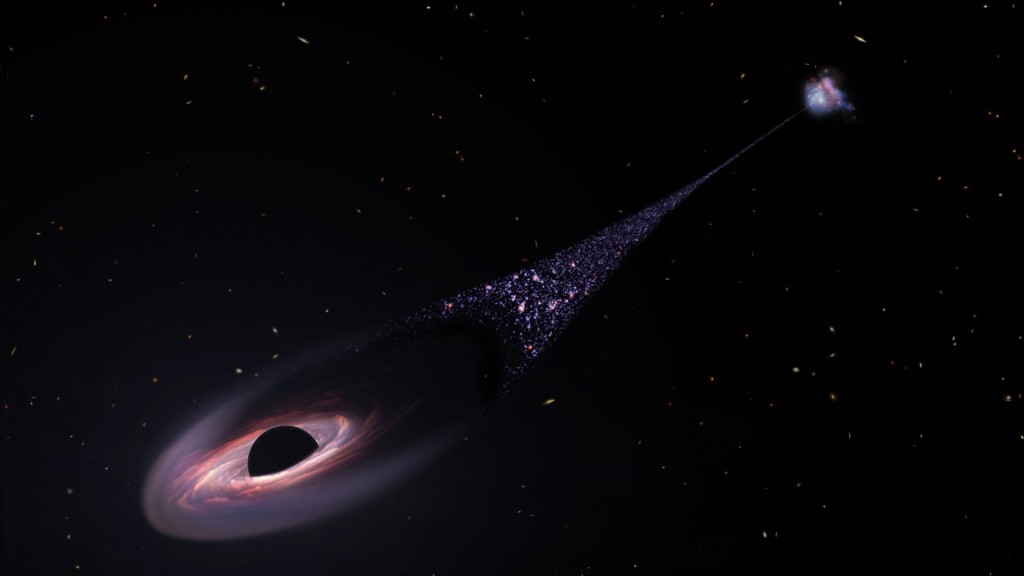
For generations, humanity has had to be content with artistic illustrations of black holes as a means to imagine these difficult-to-imagine cosmic objects.
Now, the Event Horizon Telescope (EHT) Collaboration which gave the world its first real image of a black hole in 2019, has imaged the same object with different frequencies and at the highest resolution ever—creating a real-life picture that looks delightfully similar to these impressions.
This latest demonstration of the network of Earthbound telescopes increased the light spectrum of its imaging potential to as high as 345 Ghz. The collaboration’s scientists combined these with existing images of the supermassive black holes at the hearts of spiral galaxy M87 and Sagittarius A, at the lower frequency of 230 GHz to produce multi-color views of the region immediately outside the boundary of these cosmic beasts.
The new detections, led by scientists from the Center for Astrophysics | Harvard & Smithsonian (CfA), which included the Smithsonian Astrophysical Observatory (SAO), were published today in The Astronomical Journal.
“With the EHT, we saw the first images of black holes by detecting radio waves at 230 GHz, but the bright ring we saw, formed by light bending in the black hole’s gravity still looked blurry because we were at the absolute limits of how sharp we could make the images,” said paper co-lead Alexander Raymond at NASA’s Jet Propulsion Laboratory (NASA-JPL).
“At 345 GHz, our images will be sharper and more detailed, which in turn will likely reveal new properties, both those that were previously predicted and maybe some that weren’t.”
The EHT works by linking together multiple radio dishes across the globe, using a technique called very-long-baseline interferometry (VLBI). To get higher-resolution images, astronomers have two options: increase the distance between radio dishes or observe at a higher frequency.
Since the EHT was already the size of our planet, (it uses observatories from Hawai’i, Morocco, Greenland, and Chile) increasing the resolution of ground-based observations required expanding its frequency range, and that’s what the EHT Collaboration has now done.

“To understand why this is a breakthrough, consider the burst of extra detail you get when going from black and white photos to color,” said paper co-lead Sheperd Doeleman, Founding Director of the EHT. “This new ‘color vision’ allows us to tease apart the effects of Einstein’s gravity from the hot gas and magnetic fields that feed the black holes and launch powerful jets that stream over galactic distances.”
A prism splits white light into a rainbow of colors because different wavelengths of light travel at different speeds through glass. But gravity bends all light similarly, so Einstein predicts that the size of the rings seen by the EHT should be similar at both 230 GHz and 345 GHz, while the hot gas swirling around the black holes will look different at these two frequencies.
This is the first time the VLBI technique has been successfully used at a frequency of 345 GHz. While the ability to observe the night sky with single telescopes at 345 GHz existed before, using the VLBI technique at this frequency has long presented challenges that took time and technological advances to overcome.
BLACK HOLE STORIES: Scientists Reveal Incredible Image of Magnetic Fields Spiraling from Supermassive Black Hole
Water vapor in the atmosphere absorbs waves at 345 GHz much more than at 230 GHz weakening the signals from black holes at the higher frequency. The key was to improve the sensitivity of the EHT, which the researchers did by increasing the bandwidth of the instrumentation and waiting for good weather at all sites.


This achievement also provides another stepping stone on the path to creating high-fidelity movies of the event horizon environment surrounding black holes, which will rely on upgrades to the existing global array. The planned next-generation EHT (ngEHT) project will add new antennas to the EHT in optimized geographical locations and enhance existing stations by upgrading them all to work at multiple frequencies between 100 GHz and 345 GHz at the same time.
YOU MAY ALSO LIKE: NASA Visualizes What it Would Be Like to Plunge into a Black Hole – WATCH
As a result of these and other upgrades, the global array is expected to increase the amount of sharp, clear data EHT has for imaging by a factor of 10, enabling scientists to not only produce more detailed and sensitive images but also movies starring black holes.
SHARE This Latest And Best Image Of A Black Hole On Social Media…



















